It was a lot of fun to meet and visit with Paul James back in 2019. Paul came all the way from Australia to do a music and cultural road-trip tour of the USA over 5 week period.
Paul stopped at number of historic and musically important venues across the US, with live music concerts in New Orleans and touring Sun Studio in Memphis (the recording studio that was opened by rock-and-roll pioneer Sam Phillips in 1950), for example, as well as many other fine musical and historic adventures.

Photo by David Jones, use courtesy of the Wikipedia Creative Commons Attribution 2.0 Generic license.
Paul also visited NASA, the Thomas Edison and Henry Ford museums, toured Independence Hall in Philadelphia, the birthplace of the United States, and saw where the Declaration of Independence was signed and where the U.S. Constitution was created, as well as other many other cool adventures too numerous to mention in a short blog post!
Paul certainly inspired me to get out traveling a little more in the US, and see some of these historic sites, and experience the essence of US culture and history that I normally take for granted. I feel some new adventures coming up!
Paul is a super nice guy, as well as a really knowledgable audio guy who likes to build valve preamps & amplifiers, and loudspeakers from scratch, and it was a true pleasure to have him visit, get to know him, and hear the stories of his audio adventures. Kindred spirits for sure!
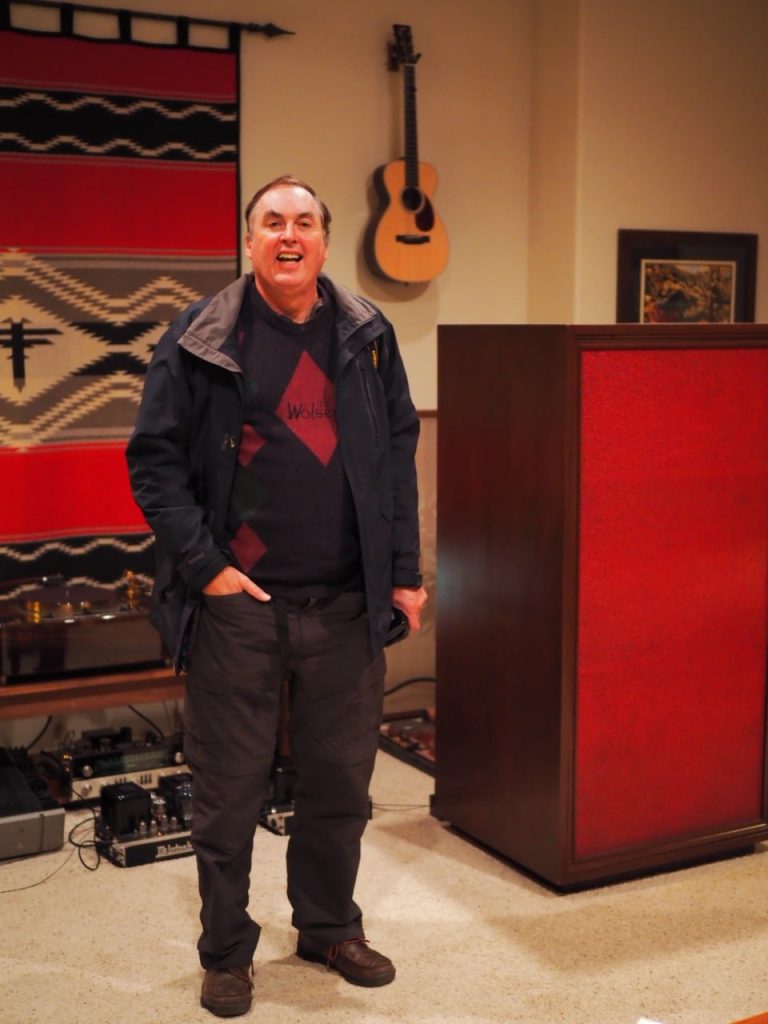
Paul James at Jeff's Place
Paul stocked up on hard-to-find vinyl during his travels as well, focusing on early American music, visiting obscure but well stocked record stores during his travels, and sending boxes of rare record finds back to Australia to await his return home.
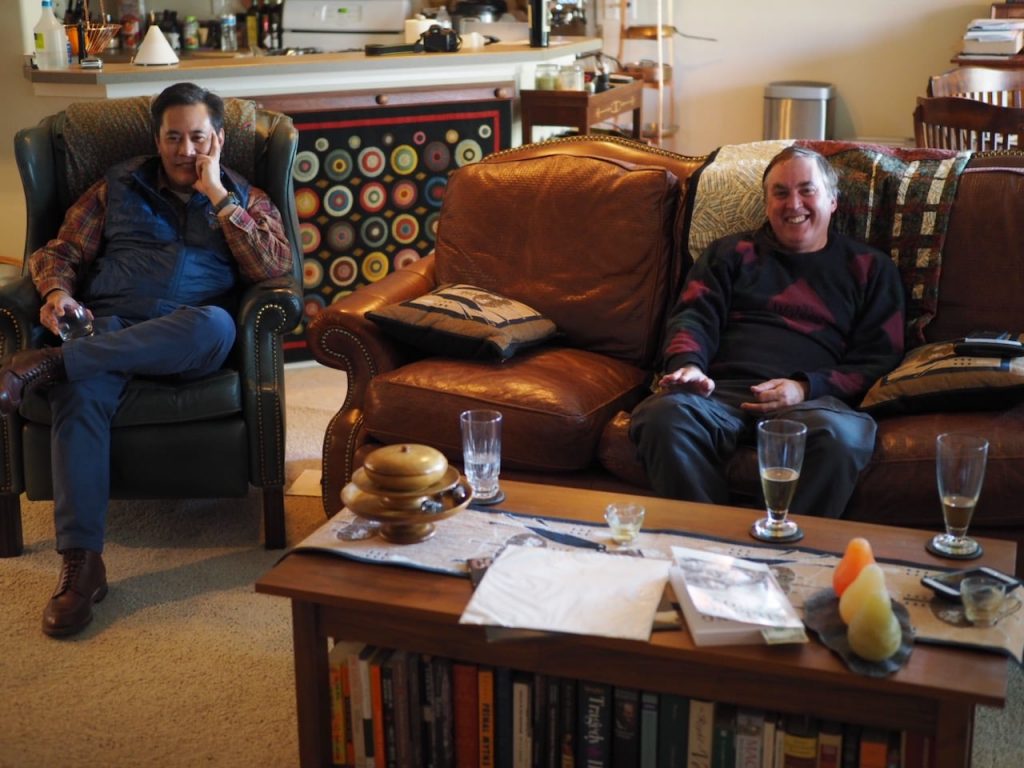
Doc Leo (left), Paul (right).
Doc Leo was able to break away from the surgery to join us, so we had double the fun chatting and listening to rare records that Paul found during his travels!
It sure was a privilege to have Paul stop in at Jeff's Place during his travels in the USA, and now Paul is back for another visit, this time with a guest article about vintage loudspeakers!
Enjoy!
Vintage Loudspeakers: Teaching An Old Dog New Tricks
Modern speakers strongly reflect contemporary styles, and arise in context of the architectural philosophy and decor of modern homes, such as having sleek easy-care surfaces, and occupying a small footprint.
Today customers have much higher expectations regarding the look and deployment of speakers. Now some customers may choose a speaker mostly for its ease of placement in their prearranged - and often limited - space and its finish and color.
The ‘spousal acceptance factor’ is a real selection criterion.
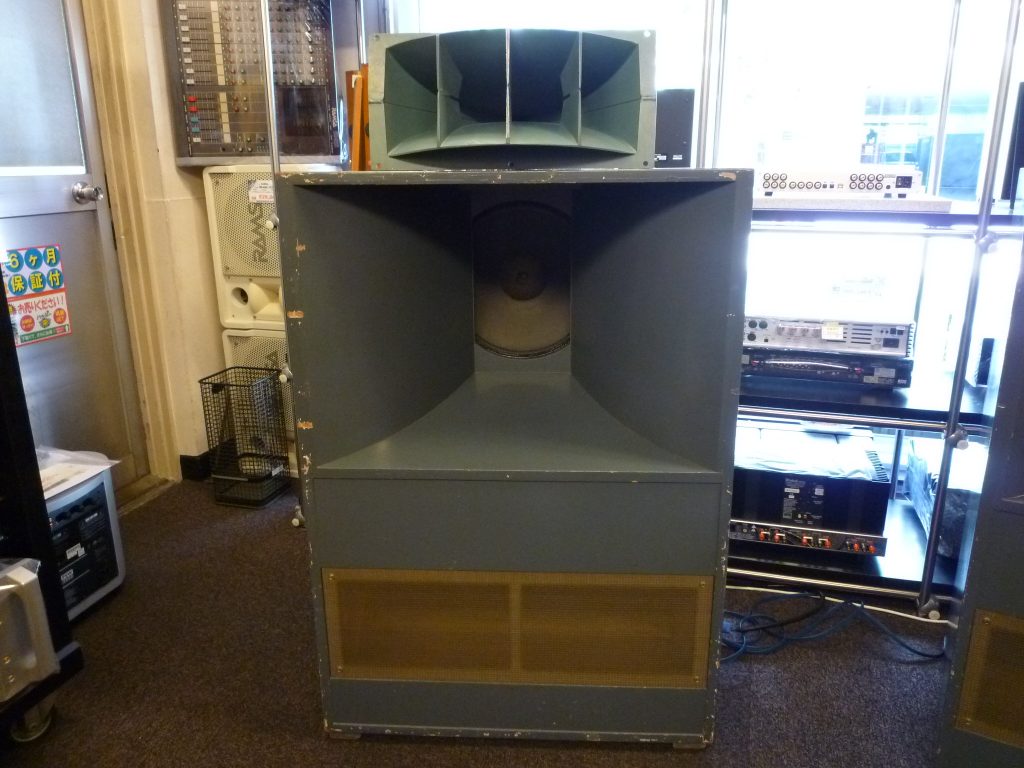
Photo courtesy of Paul James, used with permission from Ippinkan Corp. on Flicker.
This is an important difference between vintage and modern speakers. Many buyers of speakers in the past did not make the aesthetics of size and shape of a speaker a key selection criterion. In the past speaker manufactures had to depend more how they performed sonically against rivals.
Clever marketing of modern speakers, some misleading speaker test information, changes in listening habits, and the belief 'newer is better', has meant that many listeners may perceive vintage speakers as best placed in an audio dustbin, and most suitable for the landfill.
Yet we should not be so quick to outrightly dismiss vintage speakers with ‘Godlike rightness’ as not worthy of consideration.
As audio writer Art Dudley said, "Vintage gear offers an abundance of musically agreeable qualities that are missing from even the best contemporary gear."
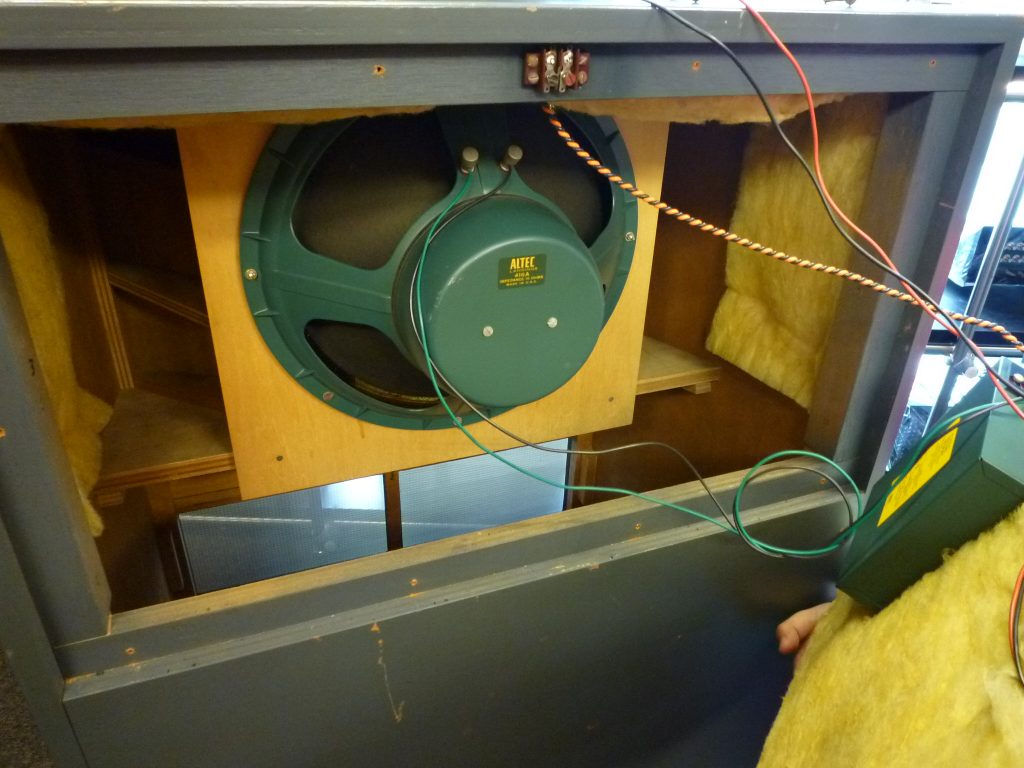
Photo courtesy of Paul James, used with permission from Ippinkan Corp. on Flicker.
When it comes to loudspeakers, there are precious few modern examples that approximate the characteristic strengths of their vintage counterparts.
There are many diverse choices for vintage speakers such as:
- Quad Electrostatic Loudspeaker
- Western Electric
- Altec 604
- JBL
- RCA
- Tannoy
- Klangfilm Eurodyn
- Goodmans
- KEF
The weaknesses of vintage loudspeakers are also accompanied by some sound qualities not frequently found in modern loudspeakers.

Photo courtesy of Paul James, used with permission from Ippinkan Corp. on Flicker.
Paper Loudspeaker Cones
One weak point of vintage speakers was the use (in most cases) of natural paper cones. Not all vintage speakers had paper cones of the same sonic ability, yet there are some qualities that they share. Paper cones can give the music reproduced a natural sound in its timbral qualities. This comes at a cost as paper cones are more subject to resonances - noises caused by vibrations - that were not in the music the speaker is trying to reproduce. These resonances can be easily seen in loudspeaker frequency measurements.
Yes, most modern speakers have less problems with resonances than vintage ones. Weaknesses in vintage loudspeakers' frequency responses have been portrayed as a ‘cardinal sin’ of, as they color music by adding noises that shouldn’t be there.
Sometimes a little knowledge is a dangerous thing.
As Art Dudley says of vintage speakers, "... (they) are a choice we're not supposed to like."
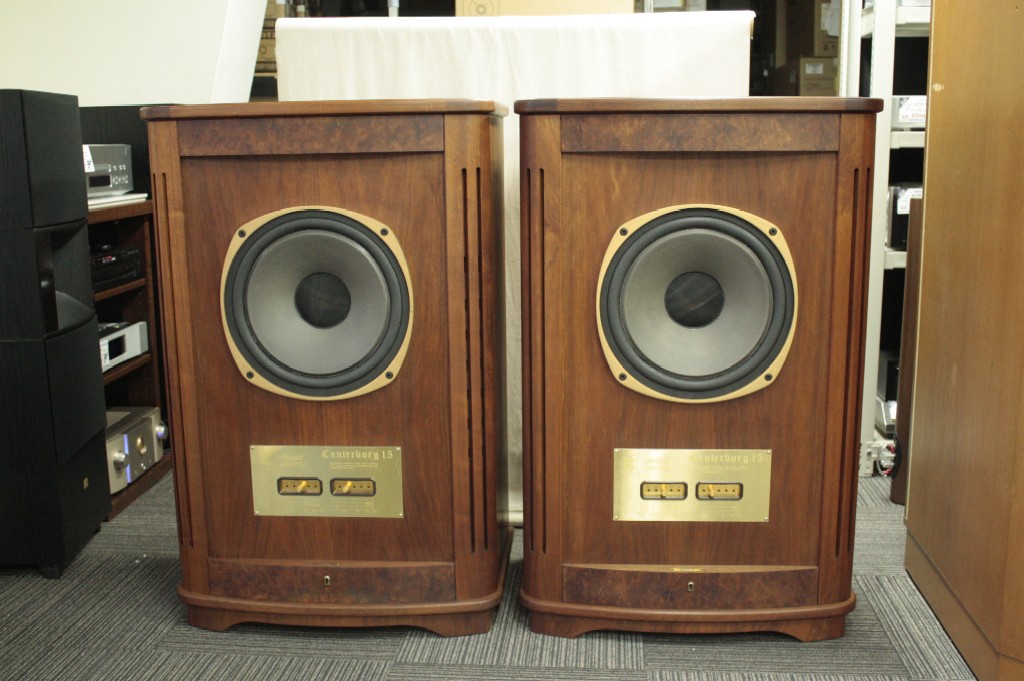
Photo courtesy of Paul James, used with permission from Ippinkan Corp. on Flicker.
Sure, frequency response graphs tell us useful things about how a speaker performs. They can help pinpoint design deficiencies and even mistakes such wiring a speaker with the wrong polarity.
Yet if flat frequency response was the ‘knockout blow’ where nothing much else matters, then few would bother with vintage speakers, except to appear trendy in some kind of counterculture way.
To understand what is going on with vintage speakers we need to step back in time. A time before personal computing and easy electronic measurements. Design was done by complex maths, by ear, and expensive test gear when it became available.
In an extension of the sound of large radios of yesteryear, the strong midrange presence of vintage loudspeakers ensured spoken word and song had good cut-through, and as a result many vintage speakers had a more convincing, solid, and natural presentation of mid-bass and mid-range frequencies than their modern counterparts.
Organic mid-bass creates a realistic foundation like live music has. Music can sound more lively and more engaging because of this designed-in fullness. While this might be considered technically wrong today, vintage loudspeakers can sound more ‘sonically right’ as they provide a more convincing illusion of actual music.
With greater efficiency - and in some cases capacity - vintage loudspeakers can sound more explosively dynamic compared to modern speakers that sound too heavily moderated, too polite, like they are in a kind of audio straitjacket. Often modern loudspeakers are more constricted, not as free and lively as vintage designs.
Many modern speakers fail by a long margin to produce the timbral richness of music. Some people when hearing good vintage loudspeaker just can’t stop toe-tapping to the music, it is just a natural biological reaction of being moved by the music.
Alnico Magnets
One strength of some vintage speakers is their Alnico magnets. While there are a small number of modern speakers using Alnico magnets, most don’t, as it became a very costly material long ago. Alnico is a family of iron alloys, which in addition to iron are of composed primarily of aluminum (Al), nickel (Ni) and cobalt (Co), hence acronym 'al-ni-co'.
Alnico magnets offer the best temperature stability of any standard magnet material produced, but it is also the most susceptible to demagnetizing forces.
Speakers with Alnico magnets are the favorite of many musicians as they are known to produce the best tone, and they also respond quickly. Having compared the Alnico and non-Alnico versions of several speakers myself, Alnico does sound different. Music sounds richer and more vibrant with Alnico magnets.
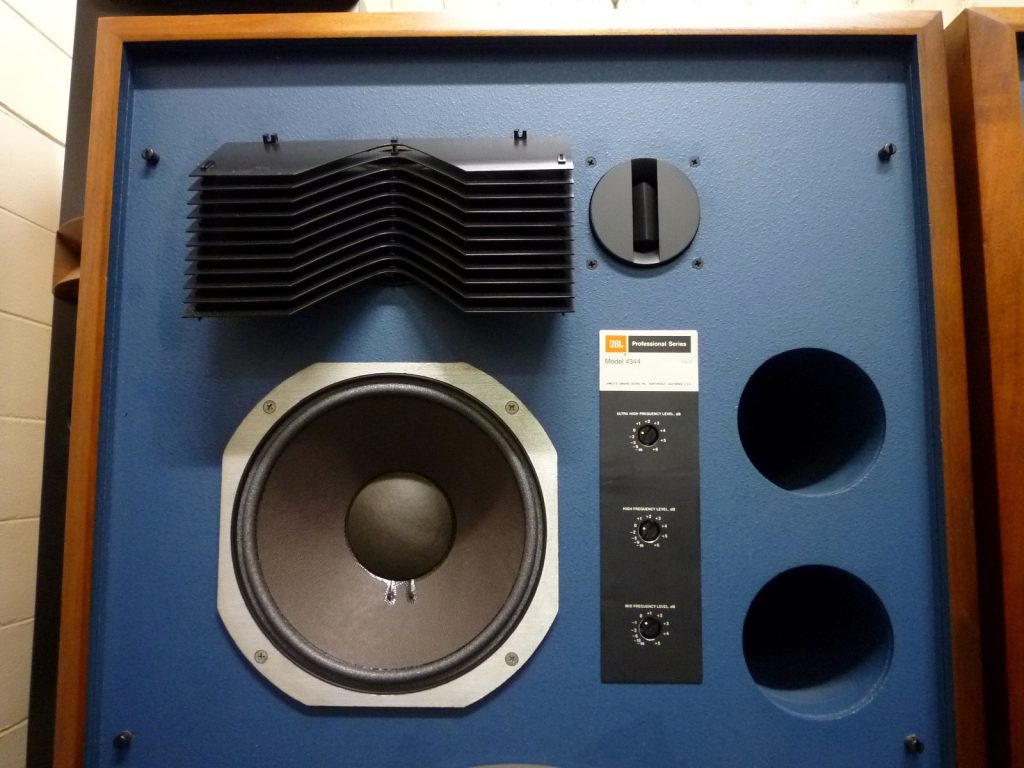
Photo courtesy of Paul James, used with permission from Ippinkan Corp. on Flicker.
Field Coils
Another type of vintage speaker is the field coil. They are expensive to produce and need their own power supply.
The problem with vintage field coil speakers is finding ones with good cones. Small tears can be repaired, yet major deterioration is hard to address, and trying to retrofit a modern cone will change the sound markedly.
The other problem with field coils is the power supply, the original power supply will most likely need to be rebuilt as parts such as capacitors will have lost their original performance or gone open circuit.
As a result, only a small number of enthusiasts pursue vintage field coils. Those that take this path will be rewarded with a different sonic signature than other loudspeakers.
Following is a short video from the YouTube channel of Evgeny Kanchukov of a Jensen field coil speaker from the 1920s:
It does give a glimpse into the different sonic presentation of field coils.
A field coil speaker uses two coils. A voice coil and a field coil. Instead of a magnet, DC is applied to the field coil to create a magnetic field. This takes the place of the permanent magnet in creating the fixed magnetic field.
The magnet strength of a field coil can be adjusted by varying the output of the power supply feeding them. There is a sweet spot where the field coil is generating extra heat and the magnetic field they produce may no longer be be linear. As magnet strength increases it becomes harder and harder to keep the magnetic field even.
With an uneven magnetic field, the speakers is no longer in perfect alignment, and as a result extra distortion will occur. So while in theory a field coil might have a magnetic strength of twice or more of regular speakers with magnets, only some of this ability may be useable.
Even when power is reduced, a field coil may still have a stronger magnet than a regular speaker. The sonic signature of a field coil changes dependent on how hard they are driven. The general tendency is the sound will be more relaxed as the voltage is lower, and the highs and lows will be more extended and detailed as the voltage is raised.
The magnet strength of most non field coil speakers is not usually more than 18,000 gauss. While field coil speakers can offer higher magnet strengths than conventional speakers, it is not the only factor influencing sound quality.
A speaker that has on paper a higher strength magnet may not be superior to another if there are major weaknesses in the consistent dispersion of the magnetic field. It also needs to be remembered that some vintage speakers with conventional magnets can still have a magnet strength that rivals or exceeds modern ones.
Upgrading some of the components in vintage field coil speakers can have major sonic benefits. Using a combination of a high capacitance modern capacitor with oil filled capacitors may reduce noise such as hum and potentially increase clarity. Providing extra capacitor storage might also increase dynamics, although dynamics is already a strong point with field coil speakers.
There are some modern manufacturers making field coil speakers, and given the speciality and complexity of their design, they are comparatively expensive.
While I haven’t heard a direct comparison against vintage field coils, I have never heard a modern field coil design sound the same as a vintage one.
With quite some time effort and fair chunk of money it may be possible to implement a vintage set of field coil speakers.
Crossovers
Some vintage loudspeakers have poor crossovers, poor connectors, and poorly made cabinets. These are weaknesses of vintage designs that can be overcome, and these vintage loudspeakers can learn new audio tricks.
There have been major advances in a number areas of audio components. The humble connector on speaker cabinet (such as a binding post) has advanced considerably. The shape, the types of metals, clamping force, and the ability to keep out dirt does affect sonics.
Fitting a better set of connectors is useful not just because of design advancements but because the connectors may have become very dirty and contact areas have weakened, particularly if they weren’t good quality in the beginning. For example, Nelson Pass has conducted measurements on dirty connectors and found that dirty connectors do undermine the electrical transfer of the musical signal.
There are still many who think wire is wire and it doesn’t matter. Yet sonic improvements are available if the internal wiring in the speaker cabinet is improved. Wiring can also be a sonic tuning aid, the wire used for different loudspeakers in a cabinet can be different, to add required fullness, warmth or some other quality that is needed for voicing.
In the past chipboard was often used for cabinets. The problem with chipboard is it can absorb moisture and hence can weaken and even distort over time. This can introduce unwanted vibrations. If the cabinet isn’t replaced, some extra bracing, and better sound deadening may also improve performance.
Often the ultimate upgrade is to put vintage speakers in a modern cabinet with a more optimum set of dimensions determined using speaker building software.
It is possible with a better cabinet, wire, connectors, and new crossover components, to well exceed the original performance of the loudspeaker.
In the following video, Danny of GR-Research demonstrates some of the upgrades that can be done to vintage speakers.
Thanks to Danny for sharing his knowledge.
The Last Word
Art Dudley may no longer be with us, yet he can still help us find our way. He says this about the best of vintage speaker designs:
"It is ... about sensitivity and efficiency, partly about size and scale, partly about placing a greater emphasis on midrange quality and color than on frequency extension, and partly about the sheer engineering attitude expressed by the designer. Whereas in contemporary audio there are any number of products that result from a designer having identified a single performance bugaboo and banished it with some or another clever solution, the best vintage products strike me as more holistic creations. Vintage engineering is seldom clever; it's simply good."
Many thanks to Paul James for writing up his thoughts on vintage loudspeakers to share with us here at Jeff's Place.
As most of you know, I too am a vintage loudspeaker enthusiast, with three out of four of my current sets of loudspeakers being vintage Altecs that date back from four to six decades in age.
Vintage loudspeakers can be a lot of fun, and very rewarding to listen to music with. Vintage loudspeakers are capable of providing a visceral and 'real' style of music presentation that you don't often hear from contemporary loudspeakers.
There's a reason that those involved the audio industry - manufacturers and writers alike - like Nelson Pass, Don Garber (RIP), Yazaki-san, Art Dudley (RIP), myself, and many others, have enjoyed listening to music with vintage loudspeakers, as they really are something special.
Give vintage loudspeakers a try if you get a chance, and your perceptions of what is important in high-fidelity loudspeakers might be irrevocably altered!
As always, thanks for stopping by, and may the tone be with you!



























